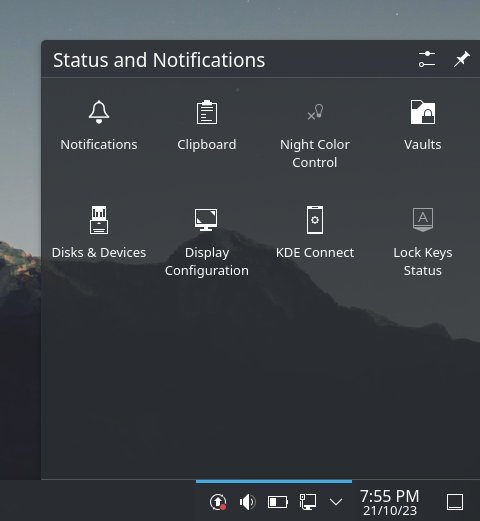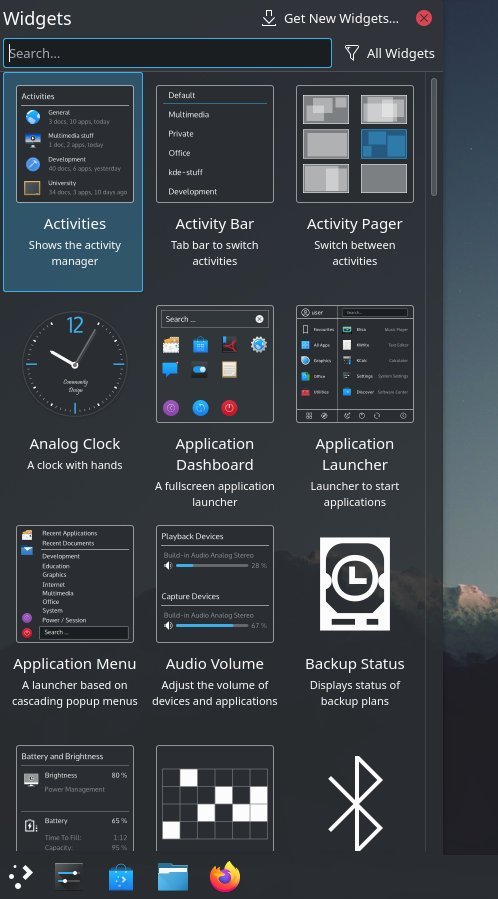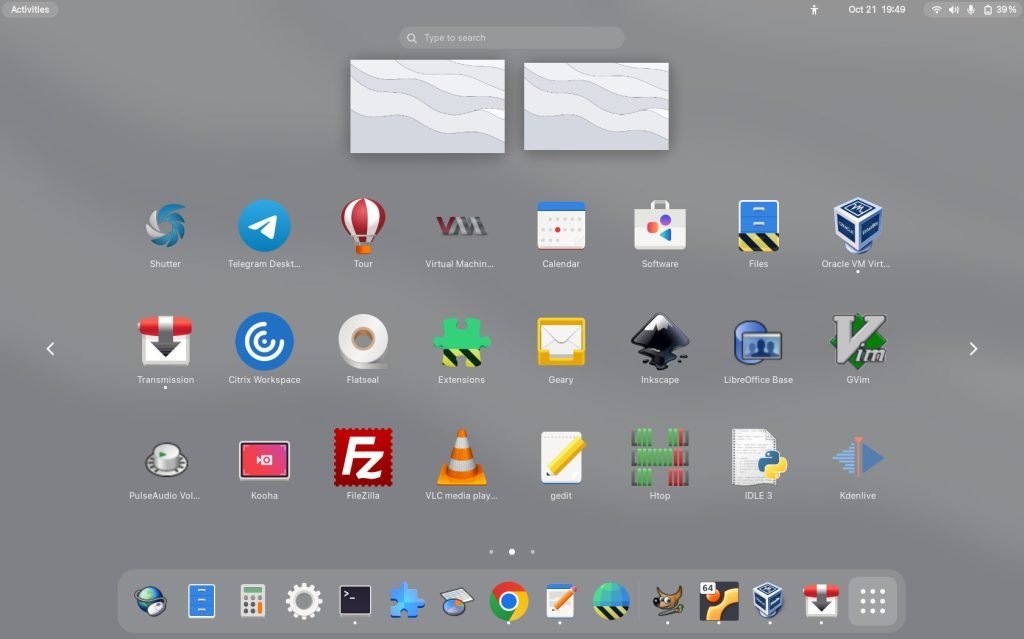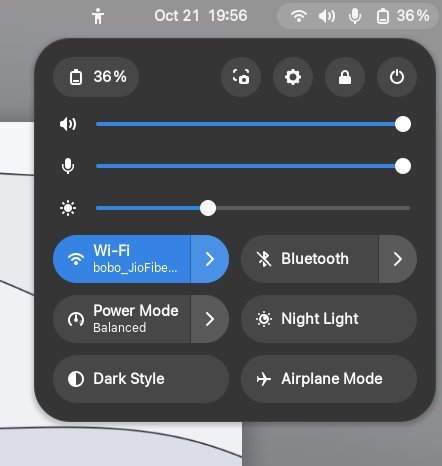In the Linux desktop ecosystem, arguably, the two most prominent players are KDE and GNOME. Both the popular desktop environment is used by millions every day, and they have come a long way. Over the years, both the desktop environment went through direction and design changes for the benefit of users.
If you are new to these two desktops and looking to make an informed choice between these two desktop environments, then this article is for you. We’ll explore the key differences between KDE and GNOME, helping you decide which one aligns better with your computing needs.
Table of Contents
What is a Desktop Environment?
A desktop environment is the graphical user interface of your Linux system. It encompasses everything you see and interact with on your screen, from icons and toolbars to widgets and windows. Think of it as your digital workspace, where you navigate the Linux world with the ease of your mouse and keyboard, similar to what you’d find in Windows.
Linux distributions often offer multiple desktop environments, and you can choose the one that resonates with your preferences. Just like GNOME is the default choice in Fedora and Ubuntu, KDE is another popular desktop environment that adorns several Linux distributions. Other desktop environments include Xfce, LXQt, etc – which you may already have heard of.
GNOME vs KDE
Design
GNOME, which stands for GNU Network Object Model Environment, is a classic desktop environment that has weathered the test of time. It presents a clean and minimalistic interface with a touch of Mac-like aesthetics. The UI features a dark mode, speedy startup, default configurations, and efficient memory usage. GNOME is an excellent choice if you’re new to Linux and seek a productive and clutter-free experience.
KDE, short for the K Desktop Environment, presents a versatile and feature-rich interface. It offers a more traditional menu and icon-based desktop, which might resonate with users who prefer a familiar layout. Similar to GNOME, KDE can be customized extensively, allowing you to tailor its appearance to your liking.
User Interface and Navigation
GNOME offers a simple and user-friendly interface with a minimalistic design. It does precisely what’s necessary, focusing on user productivity. However, getting accustomed to GNOME’s unique approach might take a little time, especially if you’re transitioning from Windows.
KDE provides straightforward navigation out of the box. If you’re familiar with Windows, you’ll find it easy to adapt to KDE. Its traditional layout with a bottom/top panel, application launcher, and system tray makes it user-friendly right from the start.

Customization
The power of customization is an inherent advantage of Linux desktop environments. GNOME ecosystem provides a huge collection of GTK themes which enables you to customize GNOME desktop any way you want. You can use the GNOME Tweak Tool to make basic adjustments like fonts and cursors or explore hundreds of extensions from the official website to tailor your desktop as per your preferences.
Much like GNOME, KDE excels in customization. It provides a wide range of tools, themes, and settings to tweak every aspect of your desktop. You can personalize your fonts, themes, window decorations, and the application menu with ease. KDE’s customization capabilities offer a deep level of control. Most of the KDE customizations and tweaks are built-in, so you rarely need any additional add-ons to change the desktop components.
Stability
GNOME has evolved over the years and is widely regarded as stable and reliable. Its well-established codebase, along with contributions from prominent players like Canonical and Red Hat, has contributed to its stability. GNOME offers a robust and polished desktop environment that’s perfect for many users.
KDE, similar to GNOME, prioritizes stability as well. It introduces features quite regularly and fixes bugs in order of hundreds or more in each release. KDE Plasma has a huge team of developers and community support from various commercial players like Valve, which makes it more reliable.
Extensions Ecosystem
GNOME boasts a thriving extensions ecosystem that allows you to personalize and enhance your desktop experience. From adding new indicators to changing the look and feel of the GNOME shell, you have a plethora of options. Popular extensions like “Dash to Dock” offer a customizable dock for launching and managing your favorite apps.
KDE takes a different approach to extensions compared to GNOME. It features the “KDE Store” which enables you to download and install desktop widgets, Plasma add-ons, KWin themes and so on. In addition, the Widgets are already pre-loaded which you can enable without installing any additional files.
Overall, KDE Plasma comes with most of the tweaks and settings built-in, whereas, you need to install separately in GNOME to further customize GNOME desktop.

Performance
In terms of resource usage, GNOME tends to consume a bit more memory compared to some other desktop environments. However, it still delivers a smooth and efficient performance. It’s worth noting that the resource consumption of the desktop environment can also be influenced by the underlying Linux distribution.
KDE is known for its efficiency, making it possible to run numerous applications simultaneously without performance concerns. While resource consumption can vary depending on your usage and specific configurations, KDE generally maintains a good balance between features and performance.
Although, at earlier days KDE was indeed heavy on resources. However, in recent past, KDE team improved the desktop performance to a great degree. Number wise, KDE Plasma in a virtual machine with KDE neon takes around 1.6 GB of RAM – whereas GNOME with Ubuntu or Fedora would take around 2.1 GB in same configuration.
Accessibility
GNOME is a standout choice for users with diverse accessibility needs. It incorporates a wide array of features and tools to ensure an inclusive computing experience. Its Accessibility settings encompass screen readers, magnification tools, and high-contrast themes, catering to users with various impairments.
KDE offers some accessibility features, including screen readers and controls for users with special needs. However, GNOME has a more comprehensive range of accessibility tools and features, making it a better choice if accessibility is a top priority for you.
However, KDE does have a upperhand in touchscreens, fingerprint reader access and other modern tech access such as multi monitor displays/resolutions.
Long-term Adoption and Principles
GNOME follows a development strategy based on autonomy, openness, globalization, and adopting new technology as needed. If you’re planning for a long-term commitment to your chosen desktop environment, GNOME is a reliable choice.
KDE developers prioritize stability and have a continuous development cycle. Until Plasma 5 series KDE Plasma (with KDE Applications and Framework) have two major releases per year. This is identical to GNOME.
However, from the Plasma 6 onwards, the team may release once a year with more stability and features.
The Verdict
The choice between KDE and GNOME ultimately depends on your preferences and use case. While both desktop environments offer powerful customization and reliability, they have distinct design philosophies. KDE is more traditional and versatile, while GNOME adheres to a minimalist and clean design.
When making your decision, consider how you want to maximize your desktop experience. Regardless of your choice, both KDE and GNOME have their strengths and are part of what makes Linux so diverse and user-centric. So, whether you lean towards the versatility of KDE or the classic simplicity of GNOME, rest assured that Linux offers a wealth of choices to cater to your unique needs. Both have a long and stable future ahead considering many commercial players who develops gaming consoles, Linux phones and laptops considers both the desktop as their primary offerings.
We hope this comparison betweeen KDE and GNOME helps you make an informed decision, whichever path you choose!








